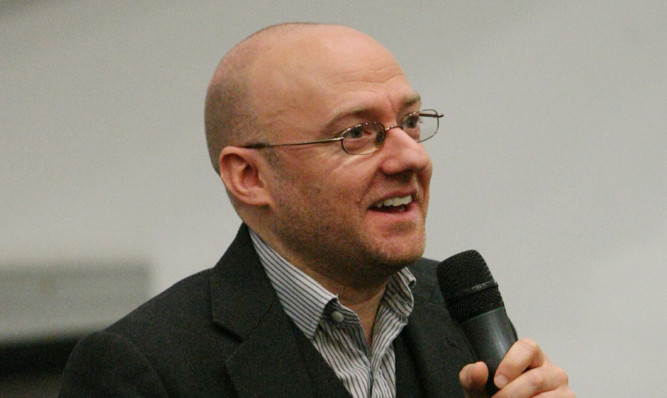Green co-convener Patrick Harvie says he is confident his party’s plans to introduce a 60p top rate of income tax for Scotland’s highest earners would raise additional revenue.
Mr Harvie argued his party’s “progressive” tax plans were aimed at closing the gap between the richest and poorest in society and would leave most people better off.
And he criticised a perception that those earning £43,000 are on a middle income, when the average salary stands at around £27,000.
Tax has become a key issue in the run up to next month’s Holyrood election, with the Scottish Parliament getting powers over income tax rates and bands from April 2017 onwards.
Unveiling their plans recently, the Scottish Greens said they wanted to reduce the income tax paid by those earning less than £26,500 a year.
Under the Scottish Green proposals, the current basic rate of income tax would be replaced with a rate of 18% for the first £7,500 of cash above the personal allowance – which is to rise to £11,000 in 2017-18.
A rate of 11% would be applied to income above £19,000 but higher earners would pay 43% tax on income over £43,000, while earnings above £150,000 would be taxed at 60%.
Asked on BBC Radio Scotland about the possible effect of the 60p plan, Mr Harvie said: “I think HMRC have been working to try and reduce the risk that people artificially relocate where their tax affairs are located.
“A great many of the people who are in that highest tax band in Scotland I believe would remain in Scotland.
“I’m very confident that it would raise additional revenue but for safety’s sake we’ve not built in an assumption about the additional revenue that would come in from that highest tax bracket.
“The most important thing about our tax proposals though is that most people would be better off.”
He told the Good Morning Scotland programme that the tax policies were about generating revenue “to protect our public services from the cuts” but also to help “close the gap in wealth and incomes between the richest and poorest in our society”.
In light of the 43% rate for those earning more than £43,000, Mr Harvie was questioned on whether those on middle incomes would be worse off under his plans.
“Not at all, no,” he replied, adding: “That’s not a middle income, is it? That’s a high income.”
He went on: “We’re proposing £43,000, as the income at which you start paying a higher rate of taxation. But there is no justification for saying that – when the average is £27,000 – somebody on £43,000 is on a middle income. That is a high income.”
Mr Harvie, whose party wants Scotland to be independent, also said he doesn’t know when another referendum on the issue should be held.
He told the programme: “Politicians generally don’t like saying I don’t know, but I genuinely don’t know. I think we have to gauge public appetite and if public appetite is clearly showing that there is a mood for another referendum then no-one should deny the right of the people of Scotland to make that decision on their own terms.”
